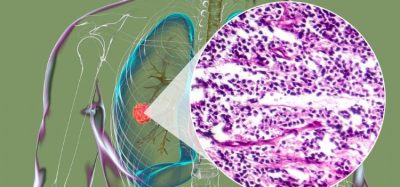A new model for enhancing microparticle injectability
Posted: 9 July 2020 | Hannah Balfour (European Pharmaceutical Review) | No comments yet
Scientists unveil their model, which other researchers can use to test the injectability of their drug delivering microparticle designs in silico.


Researchers have developed a computational model to help drug developers improve the injectability of microparticles carrying drug payloads. The model analyses a variety of factors, including the size and shape of the particles, to determine an optimal design for injectability.
Using this model, its creators were able to achieve a six-fold increase in the percentage of microparticles they could successfully inject. They now hope to use the model to develop and test microparticles that could be used to deliver cancer immunotherapy drugs, among other potential applications.
Injectability is key to successful drug candidates
Microparticles for drug delivery can range in size from 1 to 1,000 microns. Around a dozen microparticles made of polymers (and other materials) have been approved for human use by the US Food and Drug Administration (FDA), but many have failed due to poor injectability.
Typically requiring intravenous or sub-cutaneous administration, the ability to inject these microparticles is essential, said Morteza Sarmadi, paper’s lead author and an MIT graduate student.
“The major issue is clogging somewhere in the system that does not allow for the full dose to be delivered,” explained Ana Jaklenec, study senior author and a research scientist at MIT’s Koch Institute for Integrative Cancer Research. “Many of these drugs do not make it past development because of the challenges with injectability.”
Sarmadi added: “Injectability is a major factor in how successful a drug will be, but little attention has been paid to trying to improve administration techniques. We hope that our work can improve the clinical translation of novel and advanced controlled-release drug formulations.”
In a paper published in Science Advances, the team report how they developed the platform, experimentally analysing the effects on injectability of altering the size and shape of the microparticles (including cubes, spheres and cylindrical particles of different sizes), the viscosity of solution in which they are suspended and the size and shape of the syringe and needle used to deliver them.
The neural network model they developed uses the data they collected to predict how each of these parameters may affect the injectability of a proposed microparticle design. According to the team, the most important factors were particle size, particle concentration in the solution, viscosity of the solution and needle size. Researchers working on drug-delivering microparticles can now input these parameters into the model and get a prediction of how injectable their particles will be, saving the time and cost of building different versions of the particles to test them experimentally.
“Instead of going through the experiments, and going back and forth, having no idea of how successful the system will be, you can use this neural network and it can guide you, early on, to have an understanding of the system,” Sarmadi said.
Enhancing injectability with syringe design
Using the model, the team also explored how changing the shape of the syringe could impact injectability. They designed an optimal syringe shape – it resembles a nozzle, with a wide diameter that tapers toward the tip. Using this syringe design, the researchers increased the percentage of microparticles (described in a 2017 Science study) delivered from 15 percent to almost 90 percent.
“This is another way to maximise the forces that are acting on the particles and pushing the particles toward the needle,” Sarmadi explained. “It’s a promising result that shows that there is huge room for improvement in the injectability of microparticle systems.”
The team are now developing optimised microparticle systems for delivering cancer immunotherapy drugs. However, concluded that these types of microparticles could also be used to deliver a variety of vaccines or drugs, including small-molecule drugs and biologics.
Related topics
Drug Delivery Systems, Microparticles, Particle Sizing, Research & Development (R&D), Screening, Technology, Therapeutics









